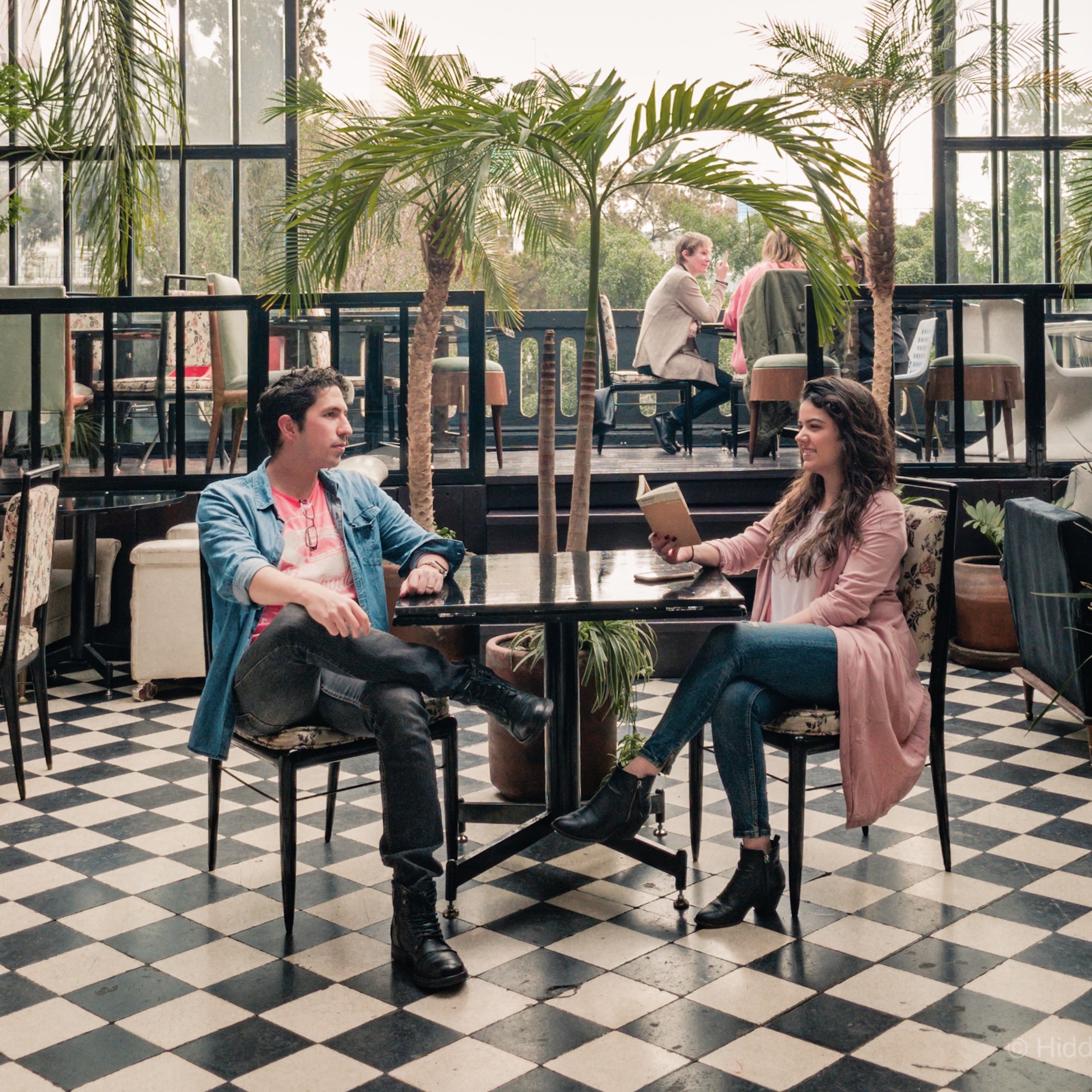
Cobblestone streets, thousands of colonial buildings named World Heritage Sites, more than 70 temples in just the historic center, talavera pottery everywhere you turn and an amazing culinary experience… That’s just the tip of the iceberg when it comes to Puebla City!
Puebla, as a state, is huge and it encompasses many beautiful cities, but if you’re on a tight schedule these are some musts. A nice mix of both new and traditional places:
8:00 Breakfast with a view
Head to Hotel El Encanto’s terrace and enjoy a lovely breakfast with Puebla’s cathedral as a backdrop. The towers you see are more than 70 meters high –the highest in Mexico.

10:00 The real 5 de mayo experience
If you’re intrigued with the whole Cinco de Mayo phenomena, this has to be your first cultural stop. Especially because early in the morning is the best time to see in full splendor the Popocatépetl and Iztaccíhuatl, the second and third largest volcanoes in Mexico.
To get the full ‘experience’, the best way is to start in the ‘Pasaje 5 de mayo’. A newly discovered set of tunnels, which appear to have been used during the famous 5 de mayo battle against the French and that lead to the forts that witnessed Mexico’s victory.
We suggest only paying the entrance to Fort Loreto, which has a small museum with uniforms and military parafernalia from the battle. But do go up to Fort Guadalupe for an amazing view of the volcanoes and the city. Basically, the same view you get from the cable car, but for free.



13:00 Talavera workshop
Talavera pottery is an Arab tradition established in Spain during the Islamic conquest and brought to Mexico during colonial times. Until the 18th century, talavera was only used to decorate churches and convents. After that it became very popular in residencial façades, kitchenware and ornaments.
We went to Talavera Armando, one of the few workshops that have the official authenticity stamp, also known as ‘designation of origin’, which basically states that everything is done in Puebla under a fine and authentic (hand made) process.
Here you get to see the whole process behind the art, from the making of the clay to the painting and baking. To give you an idea, a medium plate takes almost two months to make.


13:30 Sweet tooth galore!
Puebla is also very famous for its candies and there’s a street (Av. 6 ote.) near the Talavera Workshop packed with many stores! The oldest and most famous one is La Gran Fama, but the rest are good too.
In your selection you can’t miss the most popular ones: Tortitas de Santa Clara (lemon glazed cookies), Borrachitos (chewy candy made with liquor and sugar and filled with a fruity cream) and Jamoncillo (fudge made with condensed milk and nuts).

14:00 Fuel up!
There are many excellent restaurants in the historic center, like Fonda Santa Clara, El mural de Los Poblanos or Casa Barroca. Whichever you choose, you have to order Chalupas and Mole (and Chile en Nogada if you’re visiting in August-September).
After you’re done, head to ‘La Pasita’. The doors can be deceiving, but this is not a typical cantina. It’s just a quick stop that the locals do ‘for a better digestion’. No seats. Just order, drink and keep walking. If it’s too early for you, just keep in mind that it closes at 5:30pm.
It is said that back when it opened, in 1916, the owner would ask the people how many blocks would they be walking to their next destination and serve the exact quantity to let them pass out safely away from the streets. All we can say is that they weren’t joking. One was plenty for us.


16:00 Heaven on earth
The Biblioteca Palafoxiana has been a dream come true to all book lovers since 1646. It’s one of the oldest public libraries in America and the first in Mexico, with a collection of more than 43,000 books of various topics and languages, such as Latin, Aramaic, Sanskrit, Náhuatl, Zapotec and Mixtec. The founder, Juan de Palafox, Spanish Bishop, said that in order to understand faith, people should have knowledge and free access to all scientific, social-humanitarian and art disciplines.
Other interesting facts: floor is original, globes and tables are from the 18th century, all the shelving was also made in the 18th century and assembled without any glue or nails, the UNESCO named it ‘Memory of the World’ and the collection has 8 incunables (first printed books).



17:00 Puebla’s crown jewel
Puebla City has over 70 temples in its historic center alone, plus the cathedral, but this chapel is the one thing you don’t want miss during your visit. The Capilla del Rosario or ‘Rosary Chapel’ took 33 years to build and 7 years to decorate (1650-1690).
Everything you see was made by indigenous groups of the southern part of Puebla. They used a pre-Hispanic mix of cane, grass, roots, milk, egg whites and blood to make the paste for all the high-relief, and a mix of honey, egg whites and resin to paste the 24k gold sheets brought from Guanajuato’s mine ‘La Valenciana’. Isn’t it amazing that these organic pastes and glue have held perfectly for more than 300 years!?
The most interesting part is that the entire decor is based on the catholic rosary –hence the name ‘Rosary Chapel’. For example: there are 150 small angels in talavera that form a giant rosary all around the lower part of the walls; all the paintings on the side describe the mysteries of the rosary, and the ones in the dome represent the litanies.


18:00 Shopping in Puebla City!
El Parian is THE place to buy souvenirs from the region. If you couldn’t visit the talavera shop or the candy street, here’s your chance to stock up. Just remember our tip on how to tell if something is talavera or not.

19:00 THE Church
Puebla’s cathedral may have a similar feeling to other cathedrals in Mexico, but what makes it unique is its façade which preserves a Spanish coat of arms. After the independence, all coat of arms or noble titles were removed, except for this one which was just covered with white plaster and re-discovered until 1934. It’s the only one left in Mexico.


20:00 Mexican fine dining
If you want to experience Puebla’s nightlife and modern feel, take a cab to Juárez Avenue. Here you’ll find tons of restaurants and bars. From all the options we highly recommend La Textilería, we loved everything we ordered. Drinks are great too and come it incredible presentations.


Useful information
Map
We’ve pinpointed all the sites mentioned above on to this map, to save you some time!
Where we stayed
Hotel Casa Abolengo: not bad and great location. We made our reservation here.

